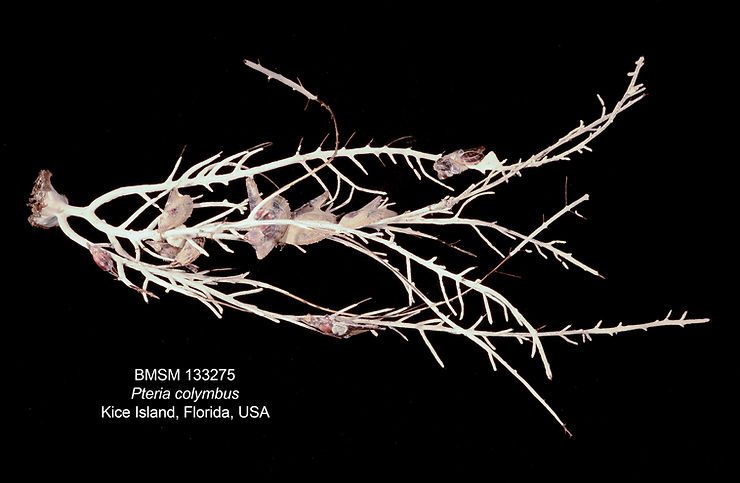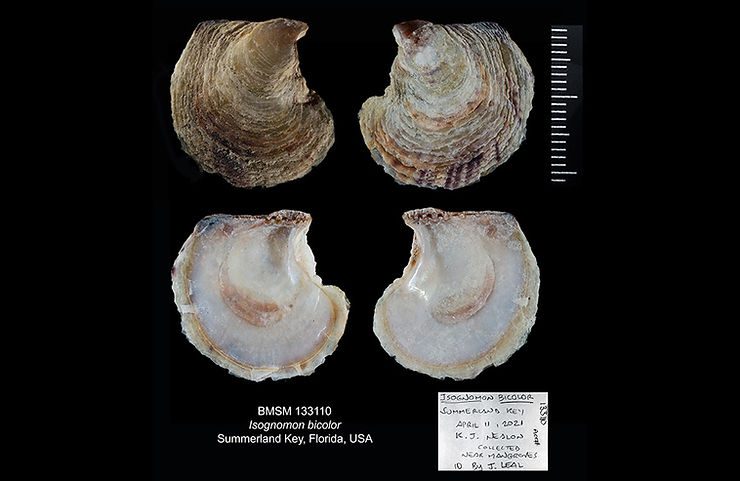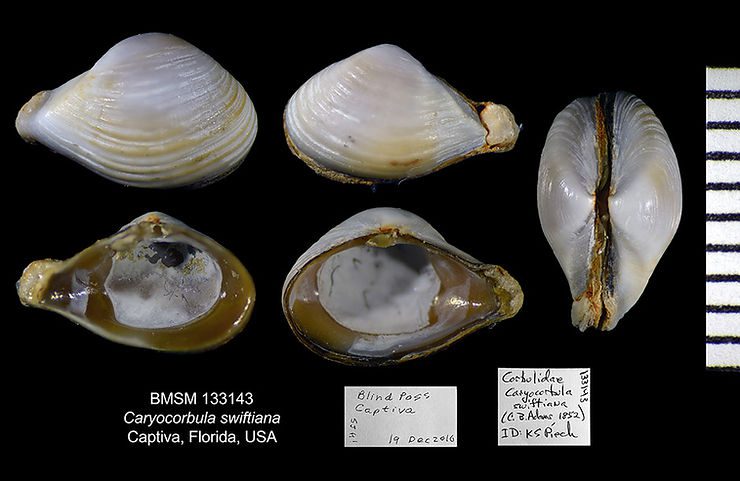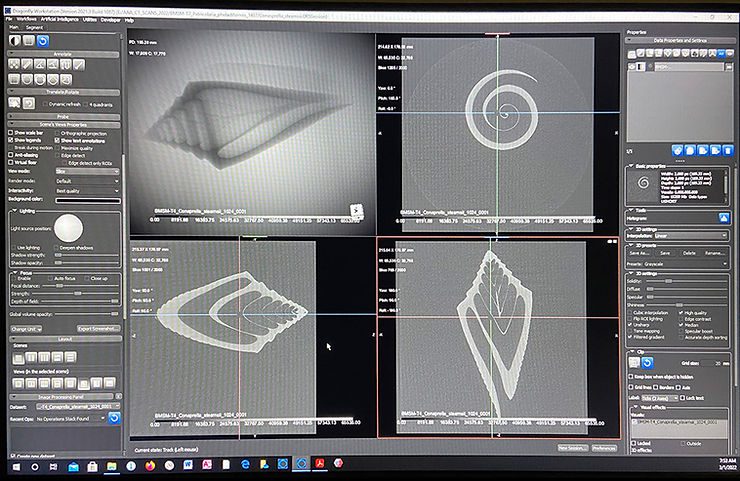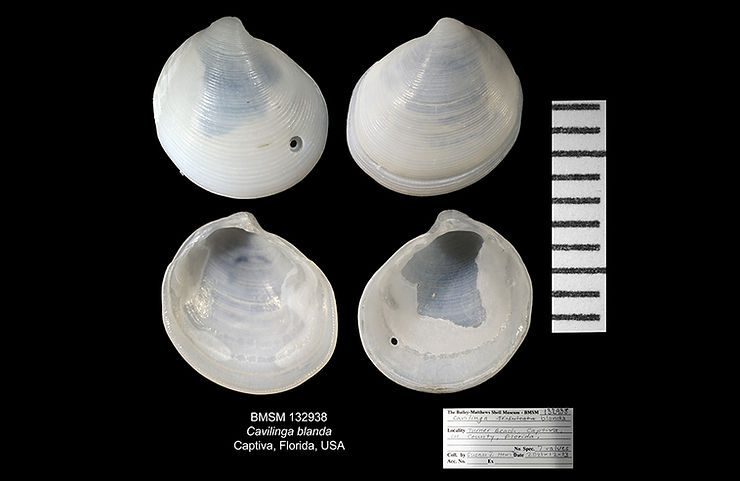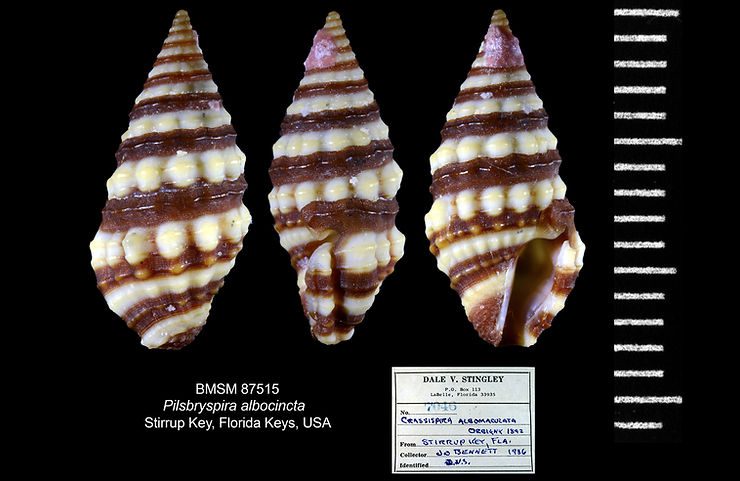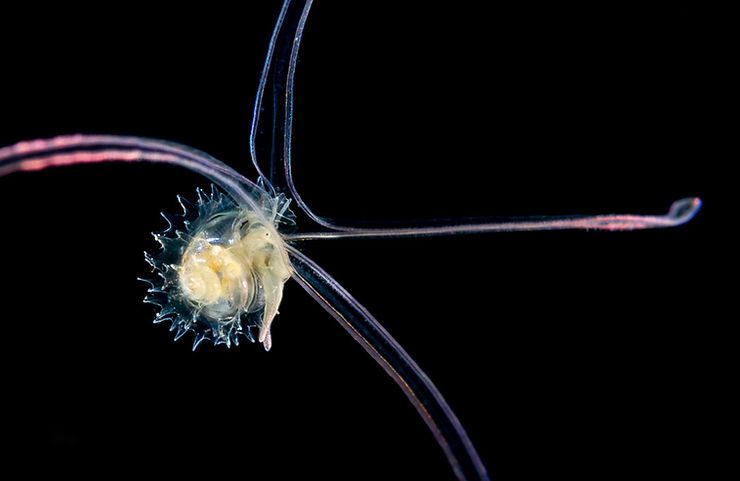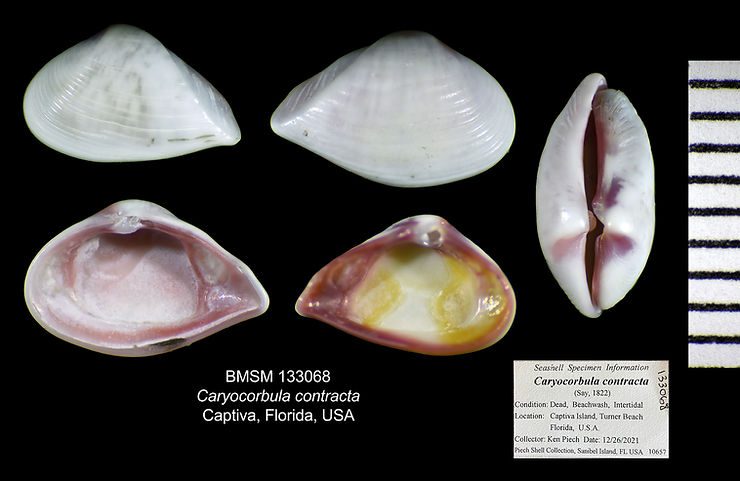
Shell of the Week: The Rose Corbula
Caryocorbula contracta (Say, 1822) reaches 10 mm (0.4 inch), has an inequivalve shell (the left and right valves have different sizes). The shell has a pointed posterior region, a well-defined radial fold or ridge is present, sculpture of smooth commarginal ridges, and the shell color is white to light gray. Internally often pinkish, orangish, or yellowish hues. The shell in the image is a single articulated pair, part of a larger collection of loose valves of the same species found by Ken Piech
